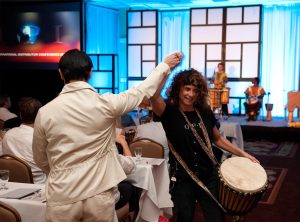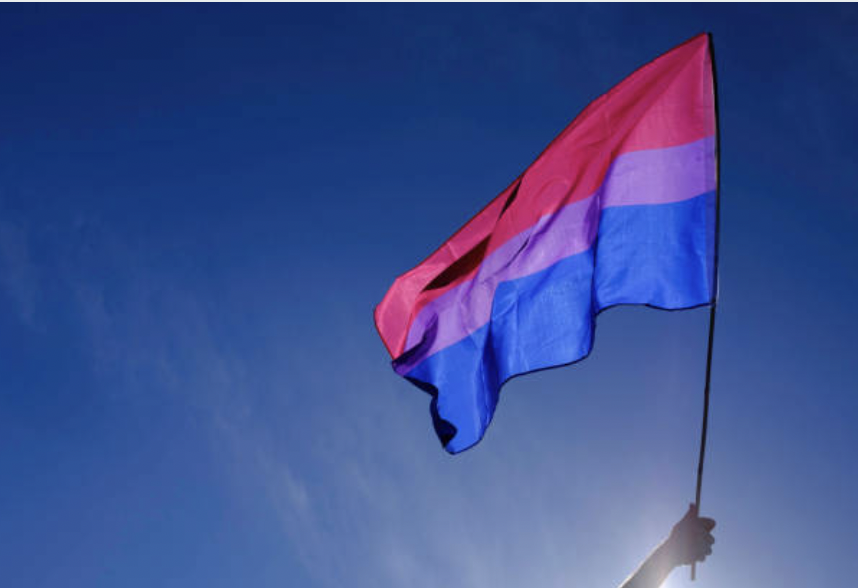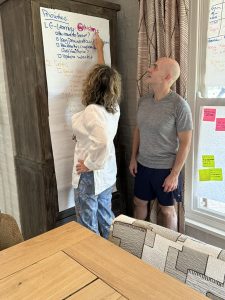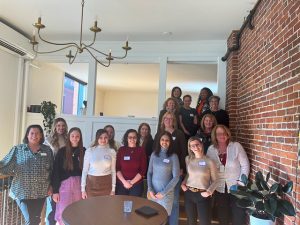
My Dimensions of Diversity (Natalie Spiro)
I am a woman with unique dimensions of diversity. Each aspect of my life contributes to a rich tapestry of experiences and perspectives. I
We’re driven by shared beliefs that allow us to work with all types of organizations across a wide range of industries to produce remarkable results.
A close-knit team with highly diverse backgrounds and skill sets, coming together with a singular purpose to deliver powerfully on your objectives and exceed your expectations.
To engage and retain talent in a rapidly evolving world, we must remain flexible and innovative in our approach to building and sustaining company culture.
Bringing in a professional coach is a smart path forward to unlock the potential observed in your leaders. Our certified coaches bring years of experience and can provide support and guidance. Empower and take your leaders to the next level.
We’re driven by shared beliefs that allow us to work with all types of organizations across a wide range of industries to produce remarkable results.
A close-knit team with highly diverse backgrounds and skill sets, coming together with a singular purpose to deliver powerfully on your objectives and exceed your expectations.
To engage and retain talent in a rapidly evolving world, we must remain flexible and innovative in our approach to building and sustaining company culture.
Bringing in a professional coach is a smart path forward to unlock the potential observed in your leaders. Our certified coaches bring years of experience and can provide support and guidance. Empower and take your leaders to the next level.

IT’S BI-VISIBILITY DAY. HERE’S WHY WE SHOULD HONOR IT
by Michelle Ostroff and Dylan Moore
Nearly 57% of people who identify as LGBTQIA+ are bisexual – and in the last several years, we’ve seen a much larger portion of the population express their bisexual identity. Bisexual+ people are a driving force in the LGBTQIA+ community as the largest identity section of the community and are leaders within local, regional, and national organizations and issue-based campaigns. Regardless of their substantial representation within the group, they are often subject to biphobia from both within the LGBTQIA+ community and in the heterosexual community. To combat biphobia, bisexual activists and allies founded a day to celebrate bisexual people: Celebrate Bisexuality Day.
THE HISTORY OF BI VISIBILITY DAY
Celebrate and recognize Bisexuality Day (September 23rd), also known as Bi Visibility Day, is an annual event celebrating bisexual people, the bisexual community’s accomplishments, and the history of bisexuality. It is also a day to recognize discrimination against bisexual people, or biphobia, and the erasure of bisexual identities in both history and current society. An extension of this day is Bisexual Awareness Week, also known as #BiWeek, which is celebrated during the week of September 23rd. This week seeks to accelerate acceptance of the bi+ (bisexual, pansexual, omnisexual, polysexual, fluid, no label, queer, etc.) community.
As a way to propel bisexual visibility, activists began spreading awareness in an official capacity in the 90’s. The oldest bisexuality organization in the United States, BiNet USA, was founded in 1990. BiNet USA held its first conference, the National Bisexual Conference in America, in 1990 in San Francisco. 450+ people from 20 states and 5 countries attended that first meeting. In response to this conference, the mayor of San Francisco issued a proclamation “commending the bisexual rights community for its leadership in the cause of social justice” and declaring June 23rd as Bisexual Pride Day. In 1999, three bisexuality activists, Gigi Raven Wilbur, Wendy Curry, and Michael Page, created Bisexuality Day and decided on September 23rd for its commencement. On the choice of date, Wendy Curry later said, “We all loved the great bisexual, Freddie Mercury. His birthday was in September, so why not Sept? We wanted a weekend day to ensure the most people would do something. Gigi’s birthday was Sept 23rd.” Bisexual Awareness Week was later co-founded by GLAAD and BiNet USA to further spread awareness, educating people on obstacles faced by the bisexual community, as well as to setting policies that ensure social integration and bisexual acceptance.
Celebrate Bisexuality Day was first observed that same year at the International Lesbian and Gay Association (ILGA) World Conference, held that year in Johannesburg, South Africa. It was the most successful ILGA World Conference yet; representatives from 40 countries gathered for the conference, more than any previous year. It was also the first time an ILGA World Conference had been held on the African continent. Coincidentally, the next one will also be held in South Africa from November 11th-15th, 2024.
National recognition of Bi Visibility Day has increased steadily since its inception. To celebrate Bi Visibility Day in 2013, the White House met with 30 bisexual advocates to discuss issues in the bi community, the first meeting of its kind. In 2021, Tom Wolf, governor of Pennsylvania, became the first US governor to issue a statement recognizing Bisexual Pride Day.
LET’S TALK ABOUT BI-ERASURE AND BI-INVISIBILITY
As mentioned, a partial source of motivation to create Bi Visibility Day was to combat bisexual erasure. Bi erasure, also known as bi invisibility, is the consistent ignoring of the existence of bisexuality in history, media and society. Bi erasure can include the assertion that bisexual people are just experimenting or going through a phase, or believing that bisexual individuals are indecisive or promiscuous. On a larger scale, bi erasure may be the removal of evidence of the bisexuality of major figures of history or revising classic novels to erase a character having romantic relationships with multiple genders.
Bi erasure’s evasiveness partly comes from the fact that it affects different genders differently. Bisexual women are often seen to, in fact, be heterosexual, simply using the term to experiment with other women as a phase. Conversely, bisexual men are accused of using the term as a stepping stone before eventually coming out for a final time as gay. Due to this stigma, many who are bisexual begin to question their own validity, as well as their place in a community – or lack thereof. A person’s fear to come out or be their authentic self can be harmful to one’s mental health.
Another facet of bi erasure’s elusiveness in mainstream culture is that the broader LGTQ+ community, not just heterosexual people, have also historically perpetuated bisexuality. Juana María Rodríguez, in her essay Queer Politics, Bisexual Erasure: Sexuality at the Nexus of Race, Gender, and Statistics, recounted her experience as an openly bisexual woman in predominantly-lesbian communities in the 1980s. She wrote, “I was surrounded by lesbian-feminist communities and discourses that disparaged, dismissed, and vilified bisexuality… The label bisexuality, for those that dared to claim it, was viewed as the apolitical cop-out.” Bisexuality is sometimes viewed among LGTQ+ individuals as an intentionally ambiguous term, supposedly giving bisexual people the ability to oscillate between the queer community and the broader perception of heterosexual society.
Even 40 years since Rodríguez’s first encounters with biphobia, the effects of bi erasure are tangible. A study by Stonewall UK found that 30% of bisexual men and almost 8% of bisexual women say they cannot be open about their sexual orientation with any of their friends, compared to 10% of gay men and 1% of lesbians. Additionally, a 2017 study found that bisexual people exhibit higher or equivalent rates in comparison to lesbian or gay people, largely due to the effects of biphobia and bi erasure.
THINK ABOUT IT: BI-ERASURE’S EFFECTS ON MENTAL HEALTH
Studies over the years have pointed to the severity of these effects. For instance, a 2019 research brief from the Trevor Project, a national organization providing crisis intervention and suicide prevention services to LGBTQIA+ people under 25, concluded something similar among America’s youth: Bisexual high school students reported more feelings of sadness and hopelessness, as well as more thoughts of suicide than those who identified as heterosexual or gay. Signs of depression, stress and exacerbated or triggered anxiety are the verification that biphobia directly impacts one’s mental health.
IN GOOD COMPANY: CURRENT PEOPLE WHO IDENTIFY AS BISEXUAL
BI VISIBILITY IN THE WORKPLACE
In terms of visibility in the workplace, there is still a lot of work to be done. In the last fifteen or so years, there have been advances to inclusive workplace policies which are crucial to creating equity but are not enough to change culture alone. Employees having to hide who they are comes at the cost of individual employee engagement and retention, displaying a company’s broader lack of inclusion and belonging in the
workplace – not just with respect to bisexual people but along other lines of diversity such as gender, race and ability in addition.
So, how can people create a more inclusive environment for bisexual people? There are many important aspects to creating a safe, inclusive, and equitable space. Some start with taking a look at our own individual biases.
At work:
As an individual:
If you are someone reading this who is on your own sexual orientation journey, know that you are exactly who you are supposed to be. There’s no need to explain yourself to anyone – your story is unique to you. If someone in your life shares more about their identity with you, be caring with this information and show respect. We’ve seen great advances in bisexual+ representation as a society and there’s definitely room for more acceptance of others in our country. Individuality is something to be celebrated!
#biweek2023
For a complete timeline of the Bisexual Movement, click here.
RESOURCES: TUNE INTO THESE AWESOME QUEER STORIES
Red, White, Royal Blue – book and movie on Amazon Prime
Disobedience (movie)
Of An Age (movie)
Dear Senthuran: A Black Spirit Memoir (book)
I’m the One That I Want (book)
Heartstopper (books and TV show)
The Invisible Life of Addie LaRue (book)

I am a woman with unique dimensions of diversity. Each aspect of my life contributes to a rich tapestry of experiences and perspectives. I

Over the past year, in a coaching engagement, a client wanted to engage in inspiring and participating with their team to work together with more

In my professional life I was not lucky to have a mentor. I had people that supported me, gave me advice, and coached me, but